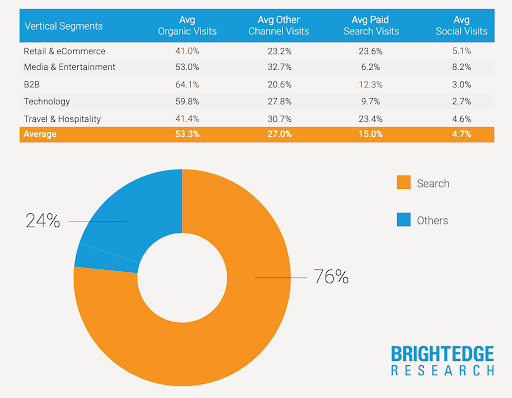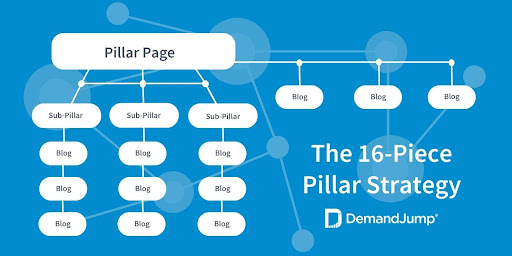As a Software-as-a-Service (SaaS) professional, how often do questions like these get stuck in your head:
- How do we reduce churn rates?
- Why are customer acquisition costs so high?
- What can we do to quicken the pace of our sales funnel?
- How can we better showcase our intangible product to prospects?
These are just a handful of the trials frustrating those in the SaaS industry, and the market is only going to get more competitive. If you have a SaaS product, recent data shows that you’re up against approximately 25,000 other SaaS companies around the globe. Plus, Gartner predicts 16.8% growth for SaaS in 2023.
So, how do you pull the spotlight over to your corner of the SaaS world and turn those ideal customer profiles into paying, loyal subscribers? Unfortunately, there is no magical formula to SaaS content. SaaS professionals must instead slog through the vast amount of resources and educational courses saturating the internet to get—and stay—ahead of the competition.
If you’re not sure where to start, you’ve come to the right place. We’ll help you learn the answer to your pressing question: “How can I learn SaaS marketing?” Let’s get started.
Why Is SaaS Marketing Different?
SaaS marketing is different from other marketing due to some unique challenges—you are marketing something intangible and unfamiliar, you have to provide ongoing value, and you have to persuade change-averse decision makers.
1. Marketing Something Intangible or Unfamiliar
Most marketers are selling products or services that the general public is fairly aware of already. We’ve all seen late night commercials and been exposed to millions of online ads—but SaaS products are typically intangible and can be unfamiliar. A software that monitors artificial intelligence algorithms for bias? A platform that helps with job scheduling and workflow orchestration across applications, systems, and infrastructure? While SaaS companies like these provide deep, long-term value, it can be difficult to show decision makers the immediate benefits—thus making it harder to convince folks to buy in.
2. Having to Provide Ongoing Value
Most SaaS products aren’t a “buy once and you’re done” situation. In fact, your users can typically cancel their subscriptions either monthly or annually. In order to prevent churn, you’ll have to market to both prospective and current customers, convincing them of the continuing value of your solution. Another factor is upselling—often you’ll find that SaaS companies are continually adding more advanced features to their plans. Educating customers about your higher-level options is another important part of SaaS marketing.
3. Persuading Change-Averse Decision Makers
“If it ain’t broke, don’t fix it” seems to be the unspoken attitude of many businesses. This can be a serious challenge for B2B SaaS marketers who have to convince a hesitant decision maker that their solution will provide immediate and long-term value.
However, in other ways, SaaS marketing is no different from any other marketing. Just like any business, a SaaS company needs to create a SaaS B2B marketing strategy that includes a range of tried and true marketing techniques—from paid ads to social media campaigns to blogs and more.
How Do B2B SaaS Companies Market? What Are B2B SaaS Marketing Examples?
There are many ways that B2B SaaS companies market, but there are three particularly effective strategies that are often used in combination with each other:
1. Free Trials, aka Freemium
Remember how we talked about an intangible and unfamiliar product? One of the best ways to combat this is by offering a free trial—with no money on the line, users can experience your product and, in some ways, convince themselves of the value. After all, product-led growth is essential for the SaaS industry, as your platform should deliver the results your customers are looking for.
However, don’t forget the next step! While freemium accounts are vital for SaaS marketers, you’ve got to encourage those free users to convert to paid accounts. You may use other marketing tactics like an email drip campaign or a targeted social media blitz to highlight the additional benefits of a paid account.
2. Organic Content Marketing
One of the best ways to market SaaS is through organic search. In fact, one study found that for B2B sites, organic search is the number one traffic generator across marketing channels.

Source: Search Engine Land
This points to the power of organic content. Here at DemandJump, we’ve seen this time and time again—people are eager for well-written, educational resources and will engage with the B2B SaaS companies that provide them. We’ll talk about our unique digital marketing strategy for SaaS in a minute, so hold on tight to learn more!
3. Paid Ads
Paid marketing will always have a place in the marketing mix for B2B SaaS. As you can see from the above graphic, this tactic is responsible for just over 12% of traffic. With paid ads, you can easily target your ideal audiences and keep your platform top of mind for prospective customers.
Is SaaS Hard to Learn?
SaaS marketing isn’t necessarily difficult to learn—but it can be hard to get it right. At DemandJump, we focus on Pillar-Based Marketing (PBM) for this very reason. We’ve found that this strategy works particularly well for B2B SaaS companies due to the educational value we can bring through the content we write.
With PBM, you’re essentially creating a network of interlinked content around a broad topic. In fact, you’re reading a PBM piece right now! Typically, a PBM plan consists of 16 pieces of content: one Pillar, three Sub-Pillars, and twelve Supporting Blogs. Let’s take a look at each of these:
- A Pillar is around 3,000 words and gives the bird’s eye view of your topic. For a SaaS company that offers algorithm monitoring, the title might be something like “Artificial Intelligence Monitoring.” This tells your readers (and search engines!) what to expect, and the whole piece is a comprehensive overview.
- The three Sub-Pillars are around 2,000 words each. They each cover a related aspect of the pillar topic, going more in-depth and linking up to the Pillar page. For example, the Sub-Pillars for our SaaS company might be “AI Monitoring Tools,” “Algorithm Monitoring Models,” and “AI Model Accuracy.”
- The 12 Supporting Blogs are each around 750 words. They cover the very specific questions and keywords that people are asking about your topic. Each Sub-Pillar and Pillar gets three blogs underneath it. So, for our “Artificial Intelligence Monitoring” Pillar, the blog topics might be:
- How do you monitor models in production?
- Why is modeling monitoring important?
- What are the 3 main types of models?
- What is artificial intelligence and why do we need it?
- What is data observability?
- What is AI technology?
- How can you improve your AI performance?
- How do you train and test a model?
- What is the difference between observability and monitoring?
- How are models tested?
- How are models measured?
- How do you implement AI monitoring?
These pieces of content all link together like so:

This sends a clear signal to Google (and other search engines) that your content is credible, well-written, and helpful for the humans that are reading it.
So, as you can see, PBM isn’t difficult to grasp, but where do you get the keywords and questions you need to make your strategy and write your content? How can you learn this SaaS marketing technique? Don’t worry, we’ve got you covered.
How Do You Get Trained in SaaS Marketing?
We offer free PBM courses for SaaS marketers through DemandJump University. This is a great way to learn Pillar-Based Marketing and start implementing a proven B2B SaaS marketing strategy. Now you may be asking yourself, “Should I take a B2B marketing course?” The answer is…yes. But, it also depends on the course you select—at DemandJump, you’ll find a comprehensive course that teaches you the theory behind PBM and guides you through building a PBM plan for your B2B SaaS business. Of course you’ll probably learn a thing or two from any SaaS marketing course, so you’ll have to weigh the pros and cons on an individual basis.
Is There a SAAS Certification for Marketing?
Yes, there are SaaS certifications for marketing, but it may be difficult to find ones that are applicable to B2B SaaS. One example that comes close is the Product-led SaaS Growth course by CXL Institute. While these types of courses can be valuable, it’s also worth remembering that 64.1% of web traffic for B2B comes from organic visits. And what’s the best way to get organic traffic for B2B SaaS companies? Through SEO content.
Which Platform Is Best for SaaS PBM Marketing? DemandJump.
In fact, DemandJump is the only platform fully enables Pillar-Based Marketing. We provide the tools and insights you need to craft a B2B SaaS marketing strategy that will lead to page one results. Our SEO keyword research and content planning tools surface exactly what your target audience is looking for and identifies the best topics to write about to capture their attention (and to beat your competitors on the SERPs!).
So when you find yourself asking, “How do I do SaaS digital marketing?” The answer is easy: with DemandJump.
Ready to learn more? Click the button below to try our platform for free—see, we’re using that “freemium” strategy ourselves! Or, check out an episode of our Page One or Bust! podcast for useful marketing examples and success stories.











